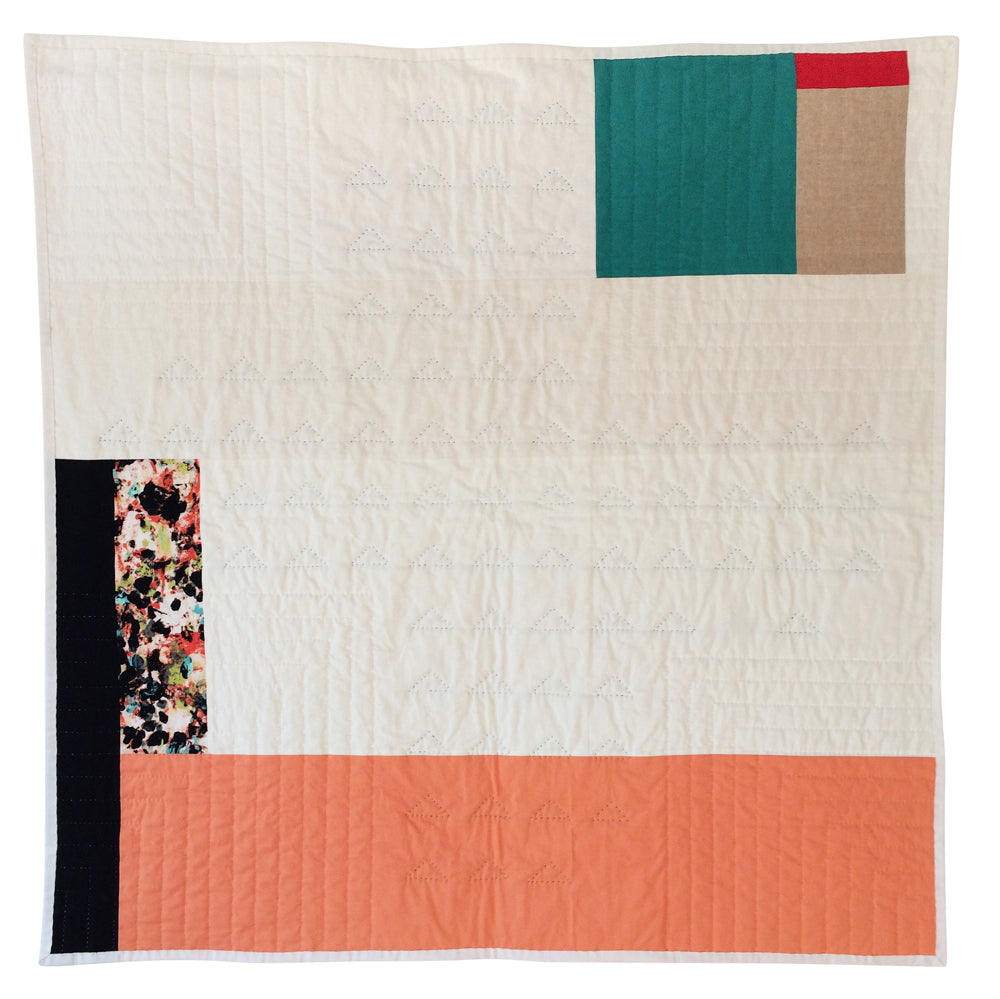By guest blogger and quilt maker Season Evans
SEATTLE WA One of the reasons I am drawn to quilts, both in form and function, is their unique ability to tell stories. When I am making a quilt I am always asking myself what I need to tell the whole story. As I am constantly drawn to stories of contradiction, I use my quilts to explore various avenues of a narrative. Often the backs of my quilt extend that story or will even contradict the front.
“Community” (below) is a quilt that tells the story of the communities I’ve lived in and the interconnectedness of living together as a society. Yet the back of the quilt tells another story - one of how fragile and disconnected communities can be. 
above: Community, front 
above: Community, back
There are times when the story is about the materials used in the quilt itself. The story begins on the front of the quilt and continues to the back, as if the quilt has its own shape or color story to tell. Using a variety of fabric for the back (cotton, linen, cotton/linen blends, and vintage yukata) allows me to explore the effects of texture and pattern. 
above: Harbor, back

above: Forward, back

above: Stereo, back 
above: Binding, back
The materials used in my quilt backs are used in direct relation to the front of the quilt (I only use cotton on front of the quilt). As in “Traffic” (below ), the fabric chosen for the back is a natural contrast (mostly natural linen) to the stark black and white stripes of the front. 
above: Traffic, back
While there are often various discussions about whether quilts are art or craft or utilitarian, regardless of categorization, quilts are objects: tactile and intimate. We can feel them, hang them on a wall, hold them, and sleep with them. The way we use quilts is not one sided just as the quilts themselves are not one sided.
When I am making a quilt, I don’t end the conversation just with the front of the quilt. I try to use all the space I have to tell the story. That means that, for me, the backs are equally as important as the front.
To visit Season’s website +click here










